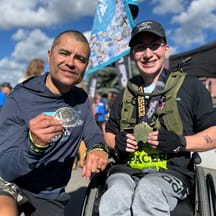Paul Viviano gets to the office at six o'clock every morning, eager to start the day. Now in his fifth year as president and CEO of Children's Hospital Los Angeles (CHLA), Viviano's passion is fueled by improving the health of children and developing the next generation of caregivers and treatments to do it.
Under his watch, CHLA has grown its market share in a market with 2.5 million children. The hospital is opening a new pediatric intensive care unit in the coming months. It is a leading provider of gene therapy for childhood blindness and CAR T-cell therapy for leukemia.
A California native, Viviano brings to CHLA three decades of health care leadership in academic medical centers, for-profit health care organizations and nonprofit community hospitals. Before joining CHLA, he served as CEO of the $1.7 billion UC San Diego Health System. Viviano spoke with Children's Hospitals Today about his experience and passions—and how they help him lead.
How has your mix of experiences throughout your career prepared you for your role at CHLA?
It's a matter of perspective. I believe every one of my experiences contributes to my ability to lead effectively. My research experience combined with business experience, combined with multiple-hospital health system experience, all have come into play as a leader of an academic medical center like Children's Hospital Los Angeles. I think that has prepared me for the many opportunities and challenges that any organization, specifically our organization, faces.
I'm the luckiest guy in the world. I've been able to work at wonderful places, all leading to what is, without a doubt, the pinnacle of my career working here at CHLA and leading an organization that is so committed to the legacy of creating health and developing the future health of the community for children. The special nature of what we do—the excellent care, the compassionate care that's focused on patient experience, the development of new treatments—fuels our academic mission.
As you look back over the past five years at CHLA, what accomplishment are you most proud of?
It's hard to name one thing. When I started in late 2015, we started a strategic planning process. I'm proud of the process we adopted, which was inclusive of our faculty, our nurses, the community. They would talk to us about how best to cast the future of CHLA. We developed a strategic plan that, in the end, translated into, how do we make it actionable? What elements do we implement? And we've implemented most of them. That's fueled our growth curve and the expansion of our services.
The spirit, morale, focus, enthusiasm and momentum here have all been created by the new strategic plan combined with a leadership team that is leading with optimism. They obviously all have the domain expertise, but they also have the love for our mission and the devotion to these precious children we're treating.
As a leader of a children's hospital, what importance do you place on advocacy?
Being a health care advocate is part of our individual and collective responsibilities as leaders in children's health care.
We take this responsibility very seriously. We played a role when there was an attempt to repeal the Affordable Care Act in Congress. We were playing a major role in advocating relative to the CMS Fiscal Accountability Rule around Medicaid.
We are actively involved in public policy debate, and we spent a lot of time with elected officials and regulators to make sure we have access to them when issues become pressing or important to us. That includes relationships with elected officials, public health officials and state officials. We invest time making sure they're aware of the transformative work we do and the special focus we have on children, caring for the underserved and being a safety-net provider for the greater Southern California area. Developing these relationships is central to the future of children's health care.
What advice would you give to help others lead in the children's hospital setting?
Our job as leaders is to solve problems and to allocate resources that are consistent with our mission. While a lot of analysis is often necessary, the premium is on actually taking action...on allocating resources and trying to translate that allocation of resources into achieving your mission and vision as an organization.
At the end of the day, we're here to improve the health of children. That includes providing outstanding care in a compassionate way and developing the future generation of caregivers and developing treatments and cures for children that didn't exist yesterday. At the end of the day, that allocation of resources is what we're here to do. It's great to think about what needs to be done, but actually deciding what to do is the essence of it. And these are tough decisions. You can have all the money in the world, but you won't be able to do everything. You have to allocate it and invest it wisely.


